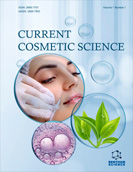Abstract
Background: Poly(methyl methacrylate) (PMMA) bone cement is widely used in cemented arthroplasties. One shortcoming of the cement is its high value of the maximum temperature reached during polymerization (Tmax), which, it has been postulated, plays a role in various deleterious phenomena such as thermal necrosis of peri-prosthetic tissues.
Purpose: This was to use the results of an investigation of the influence of one modification of the composition of the powder (addition of a phase-change material (PCM)) of a commercially-available gentamicin-loaded PMMA bone cement and one modification of the liquid of the cement (a chainstopping agent (CSA)) on Tmax and 10 other clinically-relevant properties of the cement to identify experimental cement formulation(s) that warrant(s) further evaluation as possible alternative(s) to the control cement.
Materials and Methods: The PCM was microencapsulated paraffin (MEPAR) (5, 15, and 25 wt./wt.%) and the CSA was (1-dodecyl mercaptan (DDM) (1, 2, and 3 vol./vol.) Other cement properties determined included doughing time (tdough), setting time (tset), compressive strength (σc), radiopacity, and amount of gentamicin eluted.
Results: Relative to the value for the control cement, Tmax for each experimental cement formulation was significantly lower, but the changes in the other properties varied from significant to insignificant. An outcome of the application of a validated materials selection methodology to the collection of property results led to a ranking of the experimental cement formulations.
Conclusion: The formulation in which 2 or 3 vol./vol.% DDM was added to the cement liquid should be evaluated further as possible alternatives to the control cement.
Keywords: Arthroplasties, cement properties, chain-stopping agent, phase-change material, PMMA bone cement, poly(methyl methacrylate).
Graphical Abstract














